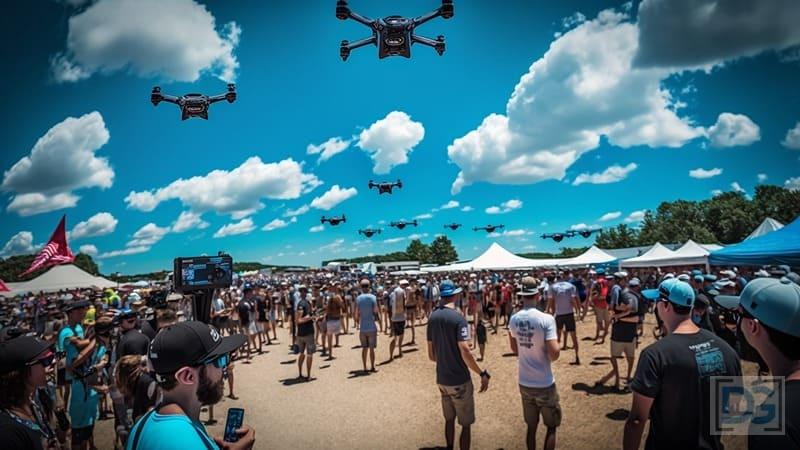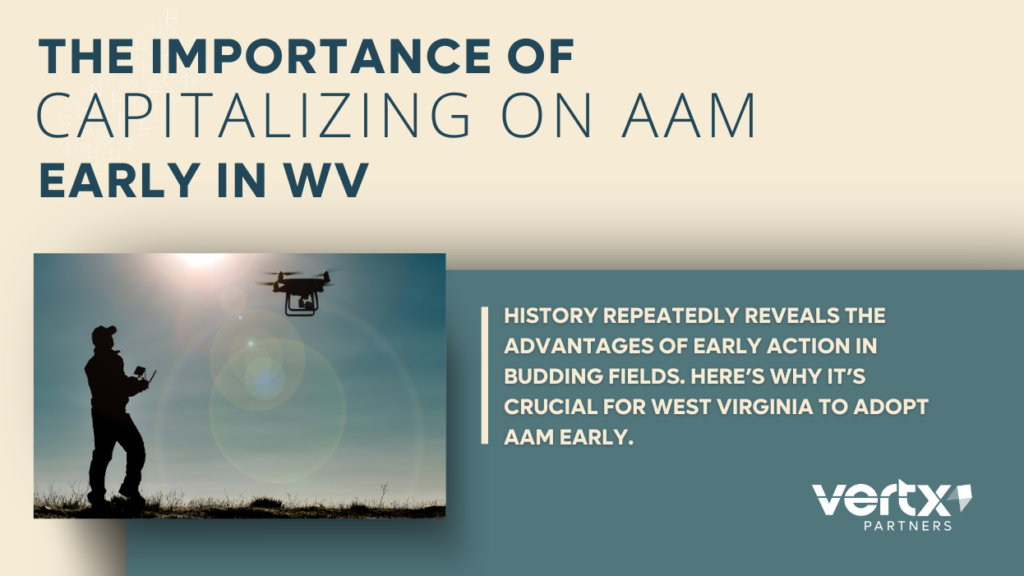West Virginia tourism has received increasing focus to generate revenue for the state. How might AAM enhance this effort in the future?

Country Roads
West Virginia.
It’s a state well-known for its rugged natural beauty, soaring mountains, lush valleys, and winding rivers. It beckons to outdoor enthusiasts from across the region.
Recently, the state has placed tourism front-and-center, particularly eco-tourism, as West Virginia works to leverage its diverse landscape and distinct Appalachian culture to draw visitors. With neighboring metropolitan areas like Washington, D.C., within a few hours’ drive, West Virginia is perfectly positioned to become a hub for tourists seeking an escape into nature.
But what if the future of West Virginia tourism doesn’t just involve the scenic drives and river rafting trips we’ve come to know? What if a cutting-edge industry could elevate the state’s tourism economy to new heights?
As the Advanced Air Mobility (AAM) industry takes off, its transformative potential could significantly impact West Virginia’s tourism sector, offering novel experiences for visitors and businesses alike. WV Tourism and AAM already seem like a match made in (almost) heaven. After all, marketing already employs high-definition drone footage of the state’s most iconic natural landmarks – from the towering cliffs of Seneca Rocks to the winding trails of the Appalachian Mountains – in advertisements as is, but what’s next?
Here’s how AAM might enhance tourism in the Mountain State.
West Virginia as a Drone Racetrack

In addition to aerial footage, drones have the potential to create a new niche tourism market: drone racing.
The Drone Racing League (DRL) is the largest league of its kind in the world and regularly draws online crowds of millions of spectators. In drone racing, pilots control custom drones equipped with cameras while wearing goggles that stream the live video feed. This simulates the experience of actually flying from within the drone. At speeds of up to 90 miles per hour, it’s an intense sport.
West Virginia’s challenging terrain of valleys, hills, and forests makes it an ideal location for drone racing enthusiasts. Winding trails and steep hills could offer drone pilots complex and dynamic courses that require skill, agility, and technical expertise. By positioning itself as a premier destination for drone racing, West Virginia could attract a new type of tourist, boosting local economies while showcasing its natural beauty in an exciting and modern way.
eVTOLs: A Hands-Off Approach to Sight-Seeing

One of the most thrilling advancements within AAM is the development of electric Vertical Takeoff and Landing (eVTOL) aircraft. These versatile machines could allow tourists to experience the state’s natural wonders in ways that were previously impractical.
Crewed eVTOLs would enable visitors to soar over remote areas, offering up-close views of secluded mountains, forests, and rivers, all without the environmental impact or noise pollution of traditional helicopters.
For sight-seers, eVTOLs offer an intimate and immersive experience, allowing them to appreciate West Virginia’s stunning landscapes from new vantage points. Even setting aside eVTOLs, drones offer new possibilities for interactive tourist experiences. Imagine offering visitors the ability to control drones remotely, allowing them to explore in a non-invasive way.
With eVTOLs and drones, the state’s remote areas, often inaccessible by foot or car, would become more easily explored, allowing visitors to witness hidden gems while reducing the impact on fragile Appalachian ecosystems.
Facilitating Travel: AAM as a Gateway to the Mountain State
West Virginia’s topography has long been both a blessing and a challenge. While its mountains and rivers make it a haven for adventure tourists, the state’s winding roads and limited cell service pose challenges to accessibility. Traditional air travel often isn’t much easier, as fixed-wing flights tend to funnel tourists to larger cities, leaving many remote destinations out of reach.
AAM solves this problem by making air travel more accessible, efficient, and sustainable. eVTOLs could provide a fast and fuel-efficient alternative to both road travel and traditional flights, reducing travel times and increasing the flow of visitors to several of West Virginia’s lesser-known but equally beautiful locations.
As AAM technology develops, smaller, local airports could be revitalized as central hubs for eVTOL traffic, connecting tourists directly to rural and remote areas of the state. These regional airports could serve as gateways to popular tourist destinations, allowing out-of-state travelers to bypass the sometimes arduous roadways and instead land directly near their destination. Additionally, boosting connectivity between West Virginia’s smaller communities would have positive downstream effects, including allowing for easier emergency transport and cargo shipment.
This leads us to the bigger picture of integrating WV Tourism and AAM.
A Catalyst for Economic Growth

AAM’s integration into West Virginia’s tourism industry represents an opportunity for economic development. As more tourists flock to the state, the need for infrastructure will rise, creating jobs and boosting local economies. The construction of eVTOL-friendly airports, the development of drone racing courses, and the expansion of eco-tourism offerings would all contribute to economic growth while also promoting the state’s reputation as a leader in innovation and sustainability.
In 2023, tourism contributed $9 billion to West Virginia’s economy. That fact, coupled with firms like Morgan Stanley predicting AAM will be worth $1 trillion by 2040, makes the marriage of the two sectors a no-brainer.
Additionally, by adopting AAM early, West Virginia has the chance to position itself as a national leader in the tourism and aviation industries. The state’s commitment to forward-thinking solutions and its embrace of cutting-edge technology will draw in tourists and investors alike, further solidifying tourism as a critical driver of West Virginia’s economic future.
WV Tourism & AAM: The Future is “Up in the Air”
As West Virginia continues to focus on eco-tourism and outdoor recreation as economic drivers, Advanced Air Mobility offers a chance to enhance the tourism experience and attract new visitors. From drone videography to eVTOL flights, AAM will enable the state to showcase its natural beauty in unprecedented ways, bringing new tourists to the region and driving economic growth.
In order for these developments to come to pass, however, it’s essential that WV legislators and investors begin recognizing the potential for the AAM sector and how much it complements current efforts to market the state as a key vacation spot.
Vertx Partners dedicates itself to fostering the growth of Advanced Air Mobility in West Virginia and throughout the Appalachian region. Contact us today to learn more about how we are helping to build a brighter future for the region through cutting-edge aviation technology.











